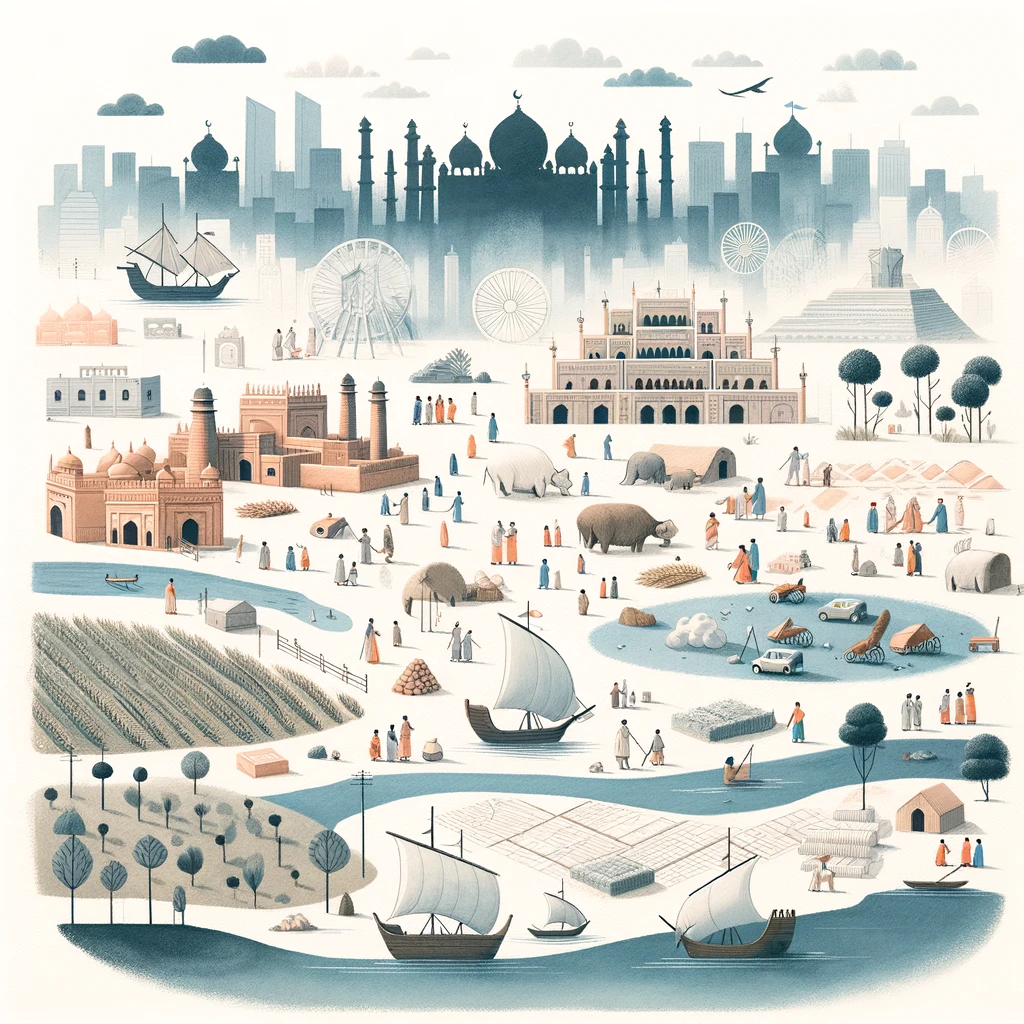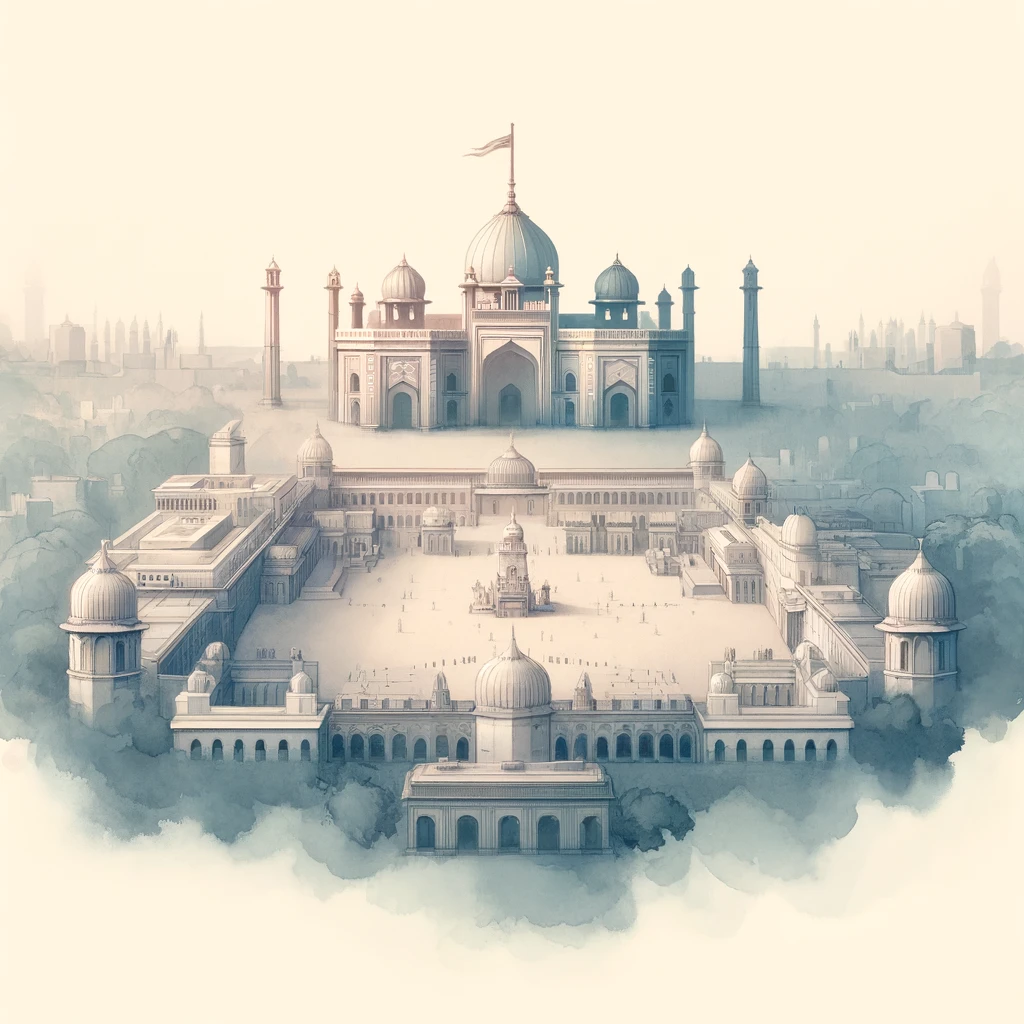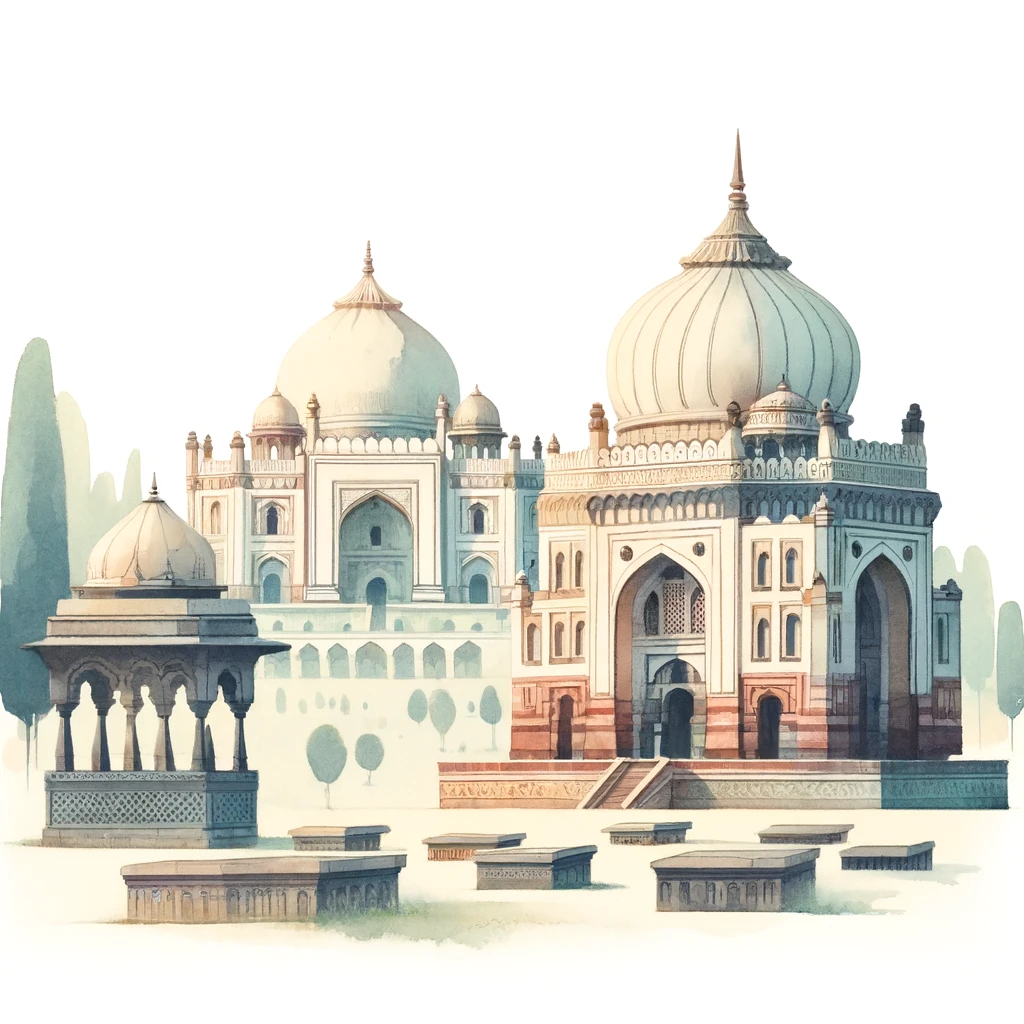The Delhi Sultanate, spanning from 1206 to 1526, was a transformative period in Indian history that brought significant changes to the socio-economic fabric of the Indian subcontinent. The Sultanate’s rule influenced various aspects of society, including trade, urbanization, and the agrarian structure.

Trade and Commerce
The Delhi Sultanate played a crucial role in revitalizing and expanding trade within India and with foreign lands. The establishment of a stable and centralized government provided a conducive environment for trade to flourish.
- Internal Trade: The Sultanate facilitated the movement of goods across the empire by improving road networks and ensuring the safety of trade routes. Markets (bazaars) in cities like Delhi, Lahore, and Multan thrived, dealing in a variety of goods such as textiles, spices, precious stones, and metals.
- External Trade: The Sultanate maintained extensive trade relations with the Middle East, Central Asia, and Southeast Asia. Indian ports on the western coast, like Cambay and Calicut, became bustling centers of maritime trade. The export of Indian textiles, spices, and handicrafts was significant, while imports included horses, luxury items, and raw materials.
Urbanization
The Delhi Sultanate era witnessed substantial urban growth, with the development of new cities and the expansion of existing ones. The Sultans encouraged the establishment of urban centers to serve as administrative, military, and commercial hubs.
- City Development: Cities like Delhi, Agra, and Jaunpur saw significant architectural developments, including the construction of forts, palaces, mosques, and public infrastructure like water supply systems and roads. These cities became focal points of cultural and economic activities.
- Population Growth: The promise of security, employment, and prosperity under the Sultanate’s rule attracted people from rural areas to urban centers. This migration contributed to the diversity and cultural amalgamation in cities, fostering a vibrant urban culture.
Agrarian Structure
The agrarian economy under the Delhi Sultanate underwent notable changes due to the implementation of new administrative practices and land revenue systems.
- Land Revenue System: The Sultans introduced a systematic land revenue system known as the Iqta system. Under this system, the land was divided into Iqtas, which were assigned to nobles and military commanders (Iqtadars) in exchange for their services. The Iqtadars collected revenue from the land and maintained troops for the Sultan.
- Agricultural Practices: The Sultanate promoted agricultural expansion by encouraging the clearing of forests and bringing new land under cultivation. The introduction of the Persian wheel (a device for lifting water) and other irrigation techniques helped increase agricultural productivity.
- Impact on Peasantry: While the new systems improved agricultural output, they also placed a heavy burden on the peasantry. Peasants were required to pay a significant portion of their produce as tax, leading to varying degrees of hardship and occasional rebellions.
Socio-Cultural Changes
The Delhi Sultanate era brought about significant socio-cultural transformations, including the synthesis of Indo-Islamic culture.
- Cultural Amalgamation: The interaction between the Persian-Turkic culture of the rulers and the indigenous Indian culture led to the emergence of a unique Indo-Islamic culture. This synthesis was evident in art, architecture, language, and cuisine.
- Religious Influence: The Sultanate’s rule saw the spread of Islam in northern India. While the Sultans promoted Islamic culture and education, they generally adopted a policy of tolerance towards other religions. Sufi saints played a pivotal role in spreading Islamic teachings and fostering communal harmony.
Conclusion
The Delhi Sultanate significantly influenced the socio-economic landscape of medieval India. Its impact on trade, urbanization, and agrarian structure laid the foundation for subsequent developments in Indian history. Understanding these changes provides valuable insights into the complexities of medieval Indian society and the legacy of the Delhi Sultanate, essential for any UPSC aspirant studying this period.



